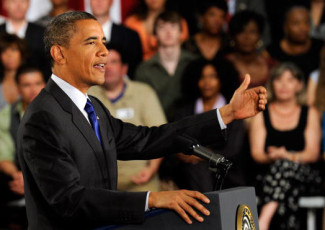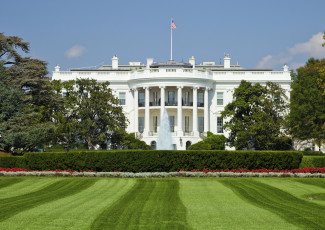How Have Tuition-Free Programs Fared So Far?
By Rebecca L. Weber
January 2, 2015
A look at the emergence of tuition-free community college programs.
Free community college programs garnered a lot of headlines last year. Missouri is already offering its program, and Tennessee and Chicago will kick off programs this fall.
Free community college tuition is the kind of ambitious reform that resonates with the public. And at the College Opportunity Day of Action this past December, the White House threw its support behind Tennessee Promise, Governor Bill Haslam’s much-publicized initiative.
That program, which will go into effect in fall 2015, is very popular so far: At the White House event, Haslam said that 56,000 of the state’s 65,000 high school seniors have applied for the benefit.
But these programs also have their critics. Some educators have questioned whether covering the tuition of students who could otherwise afford to pay for college is a good use of scarce state higher education funds.
The costs of offering free tuition
As it turns out, free education is hard to pay for. Missouri’s A+ program has come up short on funds. Possibly a victim of its own success, and too many enrollees, qualified students may wind up having to pay for some of their credits in 2015.
In Tennessee, Haslam has taken funds for Tennessee Promise from the popular Hope Scholarship, which provides grants to eligible freshmen and sophomores at state universities. The Hope Scholarship’s maximum grant is now $3,500, down from $4,000 before the creation of Tennessee Promise.
In addition, educators have pointed out that these free tuition programs end up subsidizing students who could otherwise afford to pay. That’s because free tuition programs only come into play after non-loan federal and state financial assistance is counted toward tuition. The 2015 maximum Pell award of $5,730 covers full-time tuition at community colleges in Tennessee, Missouri and Chicago.
Missing the bigger picture?
While the cost of tuition is a real issue for many students, it’s just one of many problems that community college students across the country face, says Tom Bailey, director of the Community College Research Center at Teachers College at Columbia University in New York.
“[Community college students] don’t finish, they’re confused, they don’t have a good plan, they leave after a few credits,” Bailey says. “I’m much more in favor [of free tuition programs] if they are incorporated into a larger reform agenda.”
While community colleges welcome all comers, free tuition in Chicago is for a subset of the student population. For City Colleges of Chicago students to receive free tuition through the Chicago Star Scholarship, students must have a 3.0 GPA and not need English or math remediation. By that measure, Inside Higher Ed reports that only 3,000 of the city’s 20,000 high school graduates will qualify for free community college tuition.
Large-scale reform is “difficult and require engagement by large groups of faculty and administration,” Bailey explains. “If you’ve got the money, changing the price you charge for community college is easy to do. It attracts a lot of attention. ‘I’m going to reorganize my college’ — people aren’t going to pick that up. Free tuition, free education for everybody — that attracts more attention.”
What do you think about free tuition programs? Tell us in the Comments.








